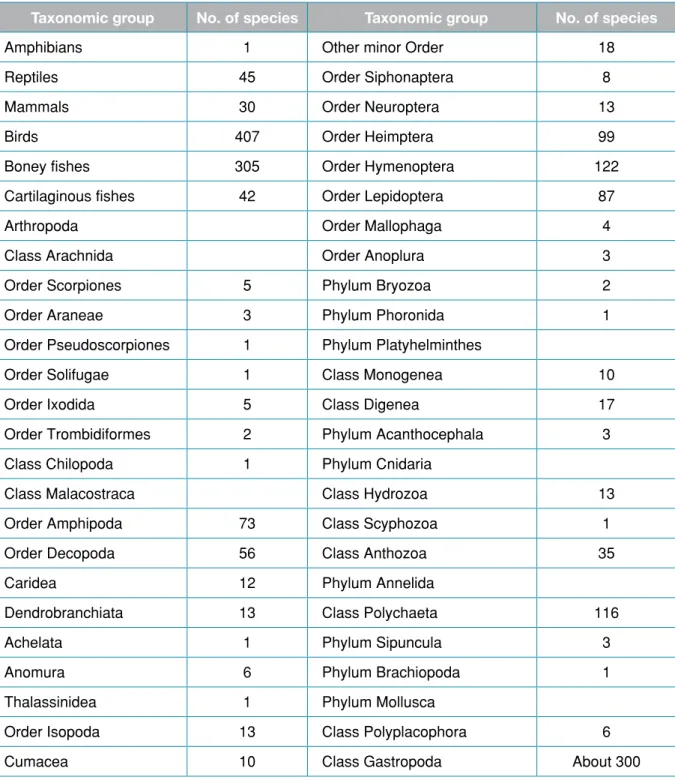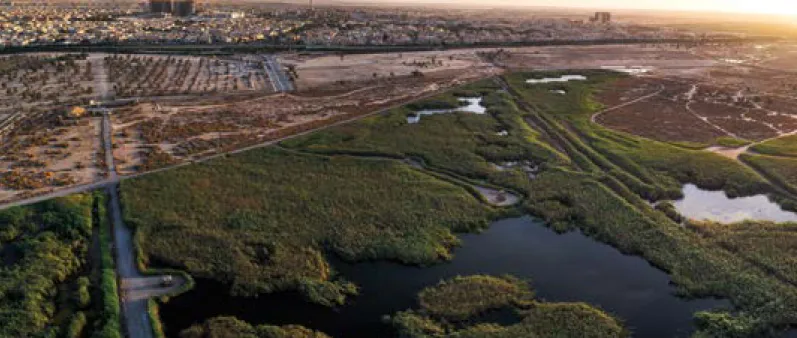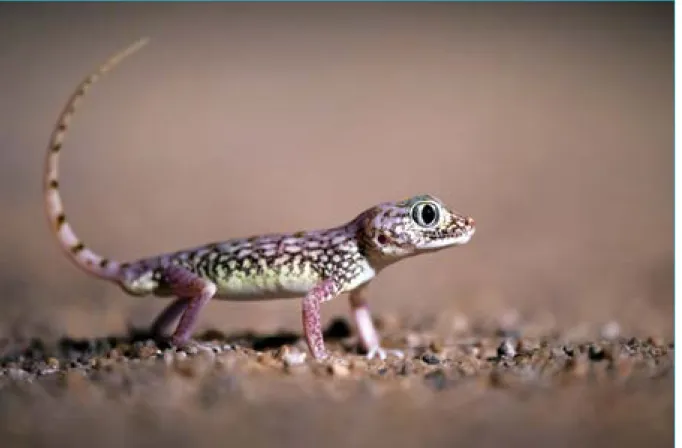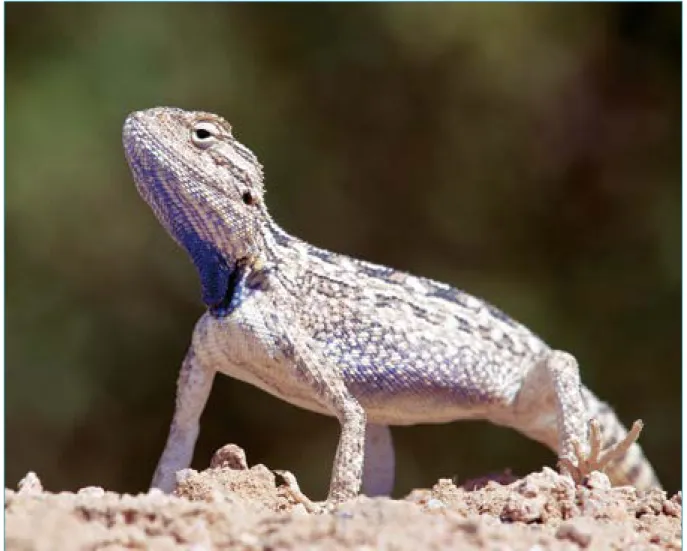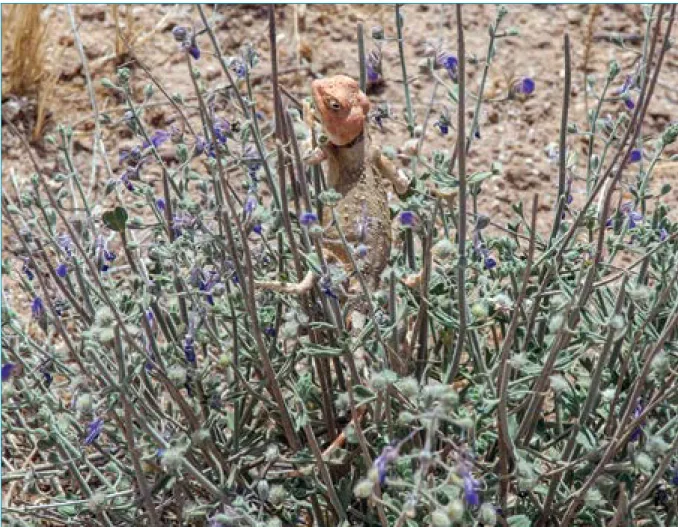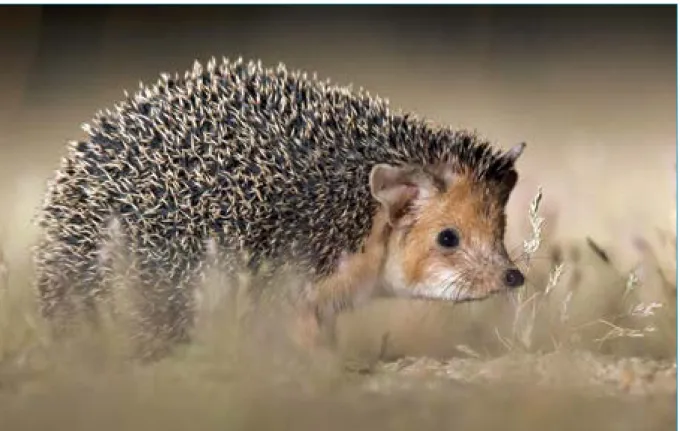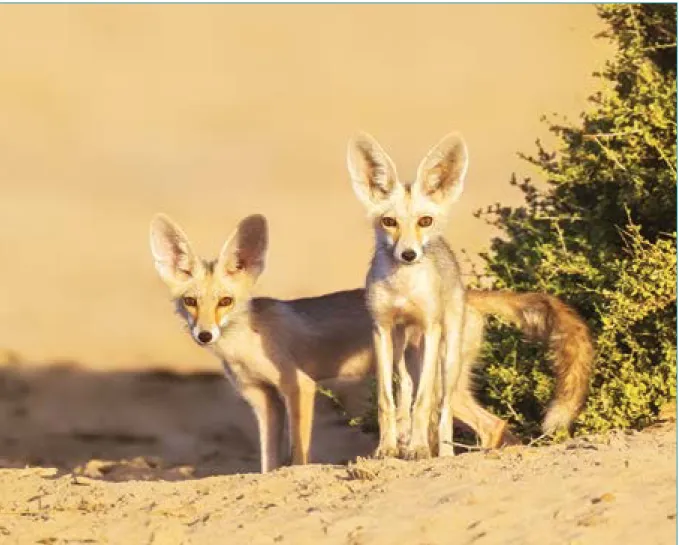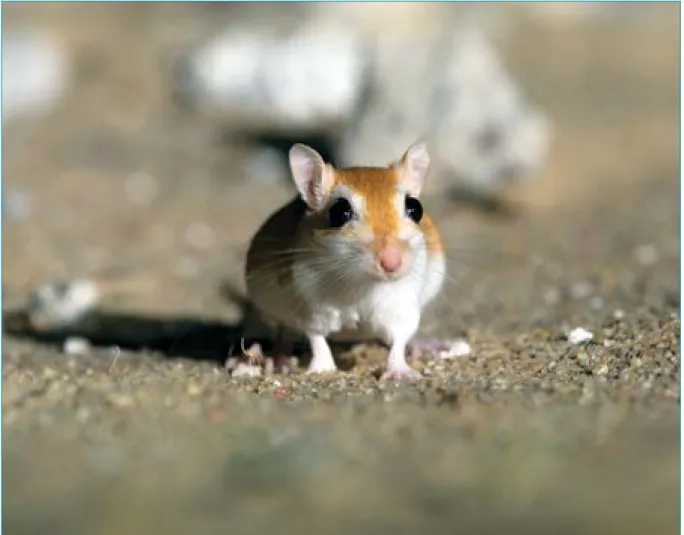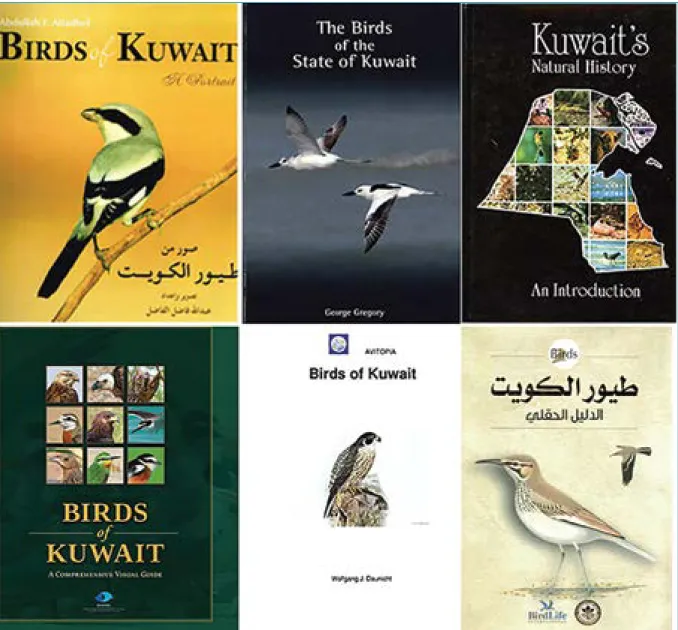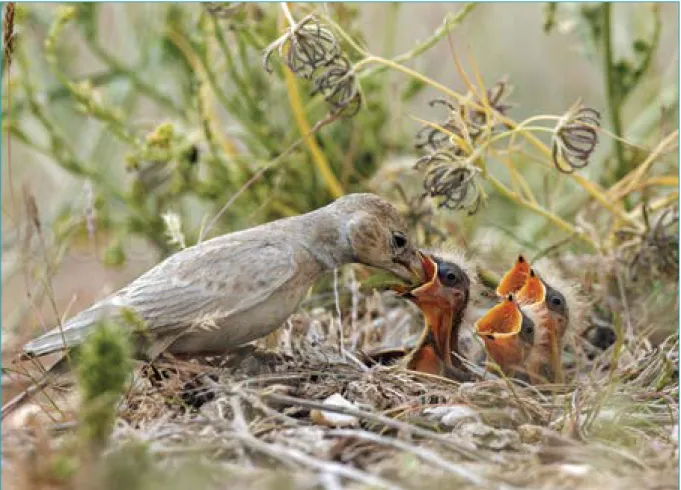INTERNATIONAL UNION FOR CONSERVATION OF NATURE - REGIONAL OFFICE FOR WEST ASIAO
About Environment Public Authority
The Environment Public Authority of Kuwait (EPA) is an independent governmental organization dedicated to environmental action in addition to domestic and international legislation and policy regarding the environment.
The Environment Public Authority was founded in 1995 and since then it serves as the epicentre of governmental action regarding the preservation of the environment in Kuwait. Environment and health protection is one of the main priorities of EPA by implementing deliberate plans and projects to protect air, soil, aquatic habitats, coastal habitats, biodiversity, and environmental impact evaluation. EPA focuses on community services and public awareness directed to different groups of the community especially the younger generations as they are the leaders of the future.
About IUCN
IUCN, International Union for Conservation of Nature with its Headquarters in Gland, Switzerland, was created in 1948 as a membership organisation.
IUCN is the world’s first and largest global environmental network. It is a democratic membership union with more than 1,400 government and non- government member organisations, and almost 18,000 volunteer scientists and experts in over 160 countries. IUCN’s work is supported by around 900 professional staff in more than 160 countries and hundreds of partners in public, NGO and private sectors around the world. IUCN seeks to help the world find pragmatic solutions to the most pressing environmental and sustainable development challenges. IUCN supports scientific research, manages field projects all over the world and brings governments, non- government organisations, United Nations agencies, companies and local communities together to develop and implement policy, laws and best practices.
About IUCN Regional Office for West Asia
The Regional Office for West Asia (ROWA) was established in 2004 in Amman, Jordan. The IUCN West Asian region comprises of 13 countries including Iraq, Jordan, Lebanon, Palestine, the Syrian Arab Republic, Yemen and Iran in addition to the Gulf countries including Bahrain, Oman, Kuwait, Qatar, Kingdom of Saudi Arabia, and the United Arab Emirates.
IUCN Regional Office for West Asia aims to be active in all 13 countries in various conservation and sustainable development activities.
The designation of geographical entities in this book, and the presentation of the material, do not imply the expression of any opinion whatsoever on the part of IUCN or other participating organisations concerning the legal status of any country, territory, or area, or of its authorities, or concerning the delimitation of its frontiers or boundaries.
The views expressed in this publication do not necessarily reflect those of IUCN or other participating organisations.
IUCN is pleased to acknowledge the support of its Framework Partners who provide core funding: Ministry of Foreign Affairs of Denmark; Ministry for Foreign Affairs of Finland; Government of France and the French Development Agency (AFD); the Ministry of Environment, Republic of Korea; the Norwegian Agency for Development Cooperation (Norad); the Swedish International Development Cooperation Agency (Sida); the Swiss Agency for Development and Cooperation (SDC) and the United States Department of State.
This publication was developed through the project “Monitoring and documentation of Biodiversity in Kuwait”, executed by IUCN Regional Office for West Asia in partnership with Environmental Public Authority of Kuwait (EPA of Kuwait), and funded by the State of Kuwait.
Published by: IUCN Gland, Switzerland and the Environmental Public Authority, State of
Kuwait, Kuwait
Produced by: IUCN Regional Office for West Asia (ROWA)
Copyright: © 2021 IUCN, International Union for Conservation of Nature and Natural Resources
Reproduction of this publication for educational or other non-commercial purposes is authorised without prior written permission from the copyright holder provided the source is fully acknowledged.
Reproduction of this publication for resale or other commercial purposes is prohibited without prior written permission of the copyright holder.
Recommended citation: Amr, Z.S. (2021), The state of biodiversity in Kuwait. Gland, Switzerland:
IUCN; the State of Kuwait, Kuwait: Environmental Public Authority.
Project team: From Environmental Public Authority of Kuwait
Dr. Abdullah Alzaidan: Deputy Director General of Technical Affairs Lina Alawadhi: Director of the Biodiversity Conservation Department Shreefa Alsalem: Head of the Wildlife Monitoring Sub department Nadia Alsager: Senior Biology Specialist
Athraa Alhabeeb: Senior Biology Researcher Shahenaz Boromana: Senior Biology Specialist
From IUCN Regional Office for West Asia
Dr. Hany El Shaer: Regional Director ROWA
Eng. Natalia Boulad: Programme Manager, Protected Areas & Biodiversity Programme
Eng. Hanna Haddad: Programme Assistant, Protected Areas & Biodiversity Programme
Ola Malah: Membership Coordinator
ISBN: 978-2-8317-2134-7 (PDF)
978-2-8317-2135-4 (print)
DOI: https://doi.org/10.2305/IUCN.CH.2021.11.en
Cover photo: Faisal Al Nomas Layout by: Kifah Fadhil Alshbeeb
Executive summary ... XIII Acknowledgments ... XVI
1 Introduction ... 1
1.1 Location and topography ... 2
1.2 Natural environment context ... 2
2 Methodology ... 7
3 Terrestrial and marine vertebrates ... 11
3.1 Classes Amphibia and Reptilia ... 12
3.2 Class Mammalia ... 18
3.3 Class Aves ... 23
3.4 Classes Chondricthyes and Osteicthyes ... 33
4 Arthropoda ... 47
4.1 Subphylum Chelicerata ... 48
4.1.1 Arachnida ... 48
4.1.1.1 Order Scorpiones ... 48
4.1.1.2 Order Araneae ... 49
4.1.1.3 Pseudoscorpiones ... 49
4.1.1.4 Order Solifugae ... 50
4.1. 2 Subclass Acari: Order Ixodida ... 50
4.1. 3 Order Trombidiformes ... 51
4.2 Subphylum Myriapoda ... 51
4.2.1 Class Chilopoda ... 51
4.3 Subphylum Crustacea ... 52
4.3.1 Class Malacostraca ... 52
4.3.1.1 Order Amphipoda ... 52
4.3.1.2 Order Decopoda: Suborder Senticaudata ... 55
4.3.1.3 Order Decopoda: Suborder Pleocyemata: Infraorder Caridea ... 60
4.3.1.4 Suborder Dendrobranchiata ... 61
4.3.1.5 Infraorders Achelata, Anomura and Thalassinidea ... 62
4.3.1.6 Order Isopoda ... 63
4.3.1.7 Order Cumacea ... 64
4.3.1.8 Order Mysida ... 64
4.3.2 Class Hexanauplia ... 65
4.3.3 Class Branchiopoda ... 67
4.4 Subphylum Hexapoda ... 68
4.4.1 Class Insecta ... 68
4.4.1.1 Order Odonata (Dragonflies)... 68
4.4.1.2 Order Orthoptera ... 70
4.4.1.3 Order Diptera ... 72
4.4.1.4 Order Coleoptera ... 78
4.4.1.5 Order Mantodea ... 79
4.4.1.6 Other minor groups ... 80
4.4.1.7 Order Siphonaptera ... 81
4.4.1.8 Order Neuroptera ... 82
4.4.1.9 Order Heimptera ... 83
4.4.1.10 Order Hymenoptera ... 85
4.4.1.11 Order Lepidoptera ... 86
4.4.1.12 Order Mallophaga ... 90
4.4.1.13 Order Anoplura ... 91
5 Phyla Bryozoa, Phoronida, Platyhelminthes and Acanthocephala ... 93
5.1 Phyla Bryozoa and Phoronida Monogenea ... 94
5.2 Phylum Platyhelminthes Digenea ... 94
5.2.1 Class Monogenea ... 94
5.2.2 Class Digenea ... 95
5.3 Phylum Acanthocephala ... 96
6 Phylum Cnidaria ... 99
6.1 Classes Hydrozoa and Scyphozoa ... 100
6.2 Class Anthozoa ... 101
7 Phyla Annelida, Sipuncula and Brachiopoda ... 107
7.1 Phylum Annelida ... 108
7.1.1 Class Polychaeta ... 108
7.2 Phylum Sipuncula ... 110
7.3 Phylum Brachiopoda ... 111
8 Phylum Mollusca ... 113
8.1 Class Polyplacophora ... 114
8.2 Class Gastropoda ... 115
8.3 Class Bivalvia ... 118
8.4 Class Scaphopoda ... 120
8.5 Class Cephalopoda ... 120
9 Phylum Echinodermata, Hemichordata and Chordata ... 123
9.1 Phylum Echinodermata ... 124
9.2 Phylum Hemichordata ... 125
9.2.1 Class Enteropneusta ... 125
9.3 Phylum (Classes: Ascidiacea and Leptocardii) ... 125
10.1.6 Marine Zooplanktons ... 135
11 Flora ... 139
11.1 Phylum Bryophyta ... 140
11.2 Angiospermae ... 141
11.3 Gymnospermae ... 144
11.4 Vegetation of Kuwait ... 149
11.5 Distribution of the vegetation ... 149
11.6 Changes to plant communities ... 151
12 Recommendations ... 155
Annexes Annex 1: Birds of Kuwait (source: Birdlife International & http://www.kuwaitbirds.org/birds)... 160
Annex 2: List of fishes recorded from Kuwait (Based on Bishop, 2003).... 175
Annex 3: Coleopteran reported from Kuwait. ... 186
Annex 4: Species of suborder Heteroptera reported from Kuwait. ... 194
Annex 5: Hymenoptera reported from Kuwait. ... 197
Annex 6: Polychaeta species reported from Kuwait. ... 201
Annex 7: Marine gastropods reported from Kuwait. ... 207
Annex 8: Bivalevs reported from Kuwait. ... 218
Annex 9: Dinoflagellates reported from Kuwait. ... 225
Annex 10: Diatoms reported from Kuwait. ... 228
Annex 11: Dicotyledoneae recorded from Kuwait. ... 236
Annex 12 Monocotyledoneae recorded from Kuwait.... 245
4.4.1.8 Order Neuroptera ... 82
4.4.1.9 Order Heimptera ... 83
4.4.1.10 Order Hymenoptera ... 85
4.4.1.11 Order Lepidoptera ... 86
4.4.1.12 Order Mallophaga ... 90
4.4.1.13 Order Anoplura ... 91
5 Phyla Bryozoa, Phoronida, Platyhelminthes and Acanthocephala ... 93
5.1 Phyla Bryozoa and Phoronida Monogenea ... 94
5.2 Phylum Platyhelminthes Digenea ... 94
5.2.1 Class Monogenea ... 94
5.2.2 Class Digenea ... 95
5.3 Phylum Acanthocephala ... 96
6 Phylum Cnidaria ... 99
6.1 Classes Hydrozoa and Scyphozoa ... 100
6.2 Class Anthozoa ... 101
7 Phyla Annelida, Sipuncula and Brachiopoda ... 107
7.1 Phylum Annelida ... 108
7.1.1 Class Polychaeta ... 108
7.2 Phylum Sipuncula ... 110
7.3 Phylum Brachiopoda ... 111
8 Phylum Mollusca ... 113
8.1 Class Polyplacophora ... 114
8.2 Class Gastropoda ... 115
8.3 Class Bivalvia ... 118
8.4 Class Scaphopoda ... 120
8.5 Class Cephalopoda ... 120
9 Phylum Echinodermata, Hemichordata and Chordata ... 123
9.1 Phylum Echinodermata ... 124
9.2 Phylum Hemichordata ... 125
9.2.1 Class Enteropneusta ... 125
9.3 Phylum (Classes: Ascidiacea and Leptocardii) ... 125
List of tables
Table 1: Number of species recorded from Kuwait per taxonomic group.... XIII Table 2: Micro and macro algae reported from Kuwait... XIV Table 3: Plants reported from Kuwait... XIV Table 4: List of animal species described from Kuwait... XV Table 5: Species of marine ciliates described from Kuwait... XVI
Table 6: List of amphibians and reptiles of Kuwait... 14
Table 7: IUCN status of reptiles of Kuwait... 15
Table 8: List of surviving mammals of Kuwait... 18
Table 9: Extinct mammals of Kuwait and their IUCN conservation status... 20
Table 10: Marine mammals reported from Kuwait and their IUCN conservation status... 21
Table 11: Books on the birds of Kuwait in Arabic... 26
Table 12: IUCN Conservation status of Kuwaiti birds... 27
Table 13: IUCN Conservation status of sharks in Kuwait and the Arabian Gulf... 35
Table 14: IUCN Conservation status of rays and guitarfishs in Kuwait and the Arabian Gulf... 36
Table 15: Regionally threatened marine bony fishes in the Gulf... 40
Table 16: Scorpions reported from Kuwait... 48
Table 17: Spiders reported from Kuwait... 49
Table 18: Ticks reported from Kuwait... 51
Table 19: Amphipods reported from Kuwait (* = described from Kuwait)... 52
Table 20: Decapoda reported from Kuwait... 56
Table 21: Caridea reported from Kuwait... 60
Table 22: Caridea reported from Kuwait... 61
Table 23: Achelata, Anomura and Thalassinidea reported from Kuwait... 62
Table 24: Isopods reported from Kuwait... 63
Table 25: Comma shrimp reported from Kuwait... 64
Table 26: Hexanaupliareported from Kuwait... 65
Table 27: Odonata of Kuwait... 68
Table 28: Orthopteran species recorded from Kuwait... 70
Table 29: Mosquitoes recorded from Kuwait... 72
Table 30: Sandflies reported from Kuwait... 73
Table 31: Chironomids reported from Kuwait... 73
Table 32: Robber flies reported from Kuwait... 74
Table 33: Beeflies reported from Kuwait... 74
Table 34: Other families of order Dipterareported from Kuwait... 75
Table 35: Diptera of medical importancereported from Kuwait... 76
Table 36: Mantodea reported from Kuwait... 79
Table 37: Other minor orders of insects reported from Kuwait... 80
Table 38: Fleas reported from Kuwait... 81
Table 39: Neuropterareported from Kuwait... 82
Table 40: Species of Aphididae and Diaspididae reported from Kuwait... 83
Table 41: Species of Cicadellidae and Delphacidae reported from Kuwait... 84
Table 42: Butterflies recorded from Kuwait... 86
Table 43: Moths of Kuwait... 88
Table 44: Mallophaga reported from Kuwait... 90
Table 51: IUCN conservation status for corals in Kuwait... 104
Table 52: Polychaeta species described from Kuwait by Mohammad (1970a & b; 1971 &1980)... 109
Table 53: Sipunculids reported from Kuwait... 110
Table 54: Chitons reported from Kuwait... 114
Table 55: Scaphopods reported from Kuwait... 120
Table 56: Cephalopods reported from Kuwait... 120
Table 57: Echinoderms reported from Kuwait... 124
Table 58: marine chorateds reported from Kuwait... 125
Table 59: Marine macroalage (Phylum Chlorophyta) reported from Kuwait... 128
Table 60: Marine macroalage (Phylum Rhodophyta) reported from Kuwait... 129
Table 61: Marine macroalage (Phylum Heterokontophyta) reported from Kuwait... 130
Table 62: Marine macroalage (Phylum Tracheophyta) reported from Kuwait... 131
Table 63: Marine algae major groups... 132
Table 64: Other marine phytoplanktons... 134
Table 65: List of species of Order Tintinnida (Phylum Ciliophora) of the Arabian Gulf... 135
Table 66: List of mosses reported from Kuwait... 140
Table 67: Floristic analysis of native and natuarlized plants of Kuwait... 141
Table 7: IUCN status of reptiles of Kuwait... 15
Table 8: List of surviving mammals of Kuwait... 18
Table 9: Extinct mammals of Kuwait and their IUCN conservation status... 20
Table 10: Marine mammals reported from Kuwait and their IUCN conservation status... 21
Table 11: Books on the birds of Kuwait in Arabic... 26
Table 12: IUCN Conservation status of Kuwaiti birds... 27
Table 13: IUCN Conservation status of sharks in Kuwait and the Arabian Gulf... 35
Table 14: IUCN Conservation status of rays and guitarfishs in Kuwait and the Arabian Gulf... 36
Table 15: Regionally threatened marine bony fishes in the Gulf... 40
Table 16: Scorpions reported from Kuwait... 48
Table 17: Spiders reported from Kuwait... 49
Table 18: Ticks reported from Kuwait... 51
Table 19: Amphipods reported from Kuwait (* = described from Kuwait)... 52
Table 20: Decapoda reported from Kuwait... 56
Table 21: Caridea reported from Kuwait... 60
Table 22: Caridea reported from Kuwait... 61
Table 23: Achelata, Anomura and Thalassinidea reported from Kuwait... 62
Table 24: Isopods reported from Kuwait... 63
Table 25: Comma shrimp reported from Kuwait... 64
Table 26: Hexanaupliareported from Kuwait... 65
Table 27: Odonata of Kuwait... 68
Table 28: Orthopteran species recorded from Kuwait... 70
Table 29: Mosquitoes recorded from Kuwait... 72
Table 30: Sandflies reported from Kuwait... 73
Table 31: Chironomids reported from Kuwait... 73
Table 32: Robber flies reported from Kuwait... 74
Table 33: Beeflies reported from Kuwait... 74
Table 34: Other families of order Dipterareported from Kuwait... 75
Table 35: Diptera of medical importancereported from Kuwait... 76
Table 36: Mantodea reported from Kuwait... 79
Table 37: Other minor orders of insects reported from Kuwait... 80
Table 38: Fleas reported from Kuwait... 81
Table 39: Neuropterareported from Kuwait... 82
Table 40: Species of Aphididae and Diaspididae reported from Kuwait... 83
Table 41: Species of Cicadellidae and Delphacidae reported from Kuwait... 84
Table 42: Butterflies recorded from Kuwait... 86
Table 43: Moths of Kuwait... 88
List of figures
Figure 1: Map showing location of the State of Kuwait (Source: http://acc.teachmideast.org).
Figure 2: Habitat of Jal Az Zour ridge (Photo from Abdulrahman Al-Sirhan).
Figure 3: Al Jaharah Nature Reserve (Photo from Faisal Al Nomas).
Figure 4: Arial photo from Al Jaharah Nature Reserve (Photo from Faisal Al Nomas).
Figure 5: Arial photo from Failka island (Photo from Faisal Al Nomas).
Figure 6: Habitat of Wadi Al Batin (Photo from Abdulrahman Al-Sirhan).
Figure 7: Some reptiles from Kuwait. Stenodactylus affinis (Photo from Abdulrahman Al-Sirhan).
Figure 8: Some reptiles from Kuwait. Trapelus agnetae (Photo from Abdulrahman Al-Sirhan).
Figure 9: Some reptiles from Kuwait. Trapelus persicus (Photo from Abdul Aziz Al Yousef).
Figure 10: Some mammals from Kuwait. Long-eared Hedgehog, Hemiechinus auritus. (Photos from Abdul Al-Azizi Al Yousef).
Figure 11: Some mammals from Kuwait. Lesser Jerboa, Jaculus jaculus. (Photos from Abdul Al-Azizi Al Yousef).
Figure 12: Some mammals from Kuwait. The Red Fox, Vulpes vulpes. (Photo from Faisal Al Nomas).
Figure 13: Some mammals from Kuwait. Cheesman,s Gerbil, Gerbillus cheesmani. (photos from Abdul Al-Azizi Al Yousef).
Figure 14: Books on the birds of Kuwait.
Figure 15: Birds of Kuwait. A female feeding its chicks (Photos from Abdul Al-Azizi Al Yousef).
Figure 16: Some birds from Kuwait. A. The Asian desert warbler, Sylvia nana. B. Barred Warbler, Sylvia nisoria. C. Black-eared Wheatear, Oenanthe hispanica. D. Blue-cheeked Bee- eater, Merops persicus. E. Common Kingfisher, Alcedo atthis. F. Temminck’s Horned Lark, Eremophila bilopha. G. Goldfinch, Carduelis carduelis. H. White-throated Kingfisher, Halcyon smyrnensis. (All photos from Abdul Al-Aziz Al Yousef).
Figure 17: Some aquatic birds from Kuwait. A. Greater Flamingo, Phoenicopterus roseus. B.
Little Egret, Egretta garzetta. C. Grey-headed Swamphen, Porphyrio poliocephalus. D.
Great Snipe, Gallinago media. E. Red-wattled lapwing, Vanellus indicus. (All photos from Abdul Al-Aziz Al Yousef).
Figure 18: Some raptors from Kuwait. A. Lilith Owl, Athene noctua lilith. B. Griffon Vulture, Gyps fulvus. C. Sparrowhawk, Accipiter nisus. D. Long-eared Owl, Asio otus. (All photos from Abdul Al-Aziz Al Yousef).
Figure 19: Some intertidal birds from Kuwait.
Figure 20: Main books on the fishes of Kuwait.
Figure 21: Books on sharks of the Arabian Gulf.
Figure 22: Some cartilaginous fish of Kuwait.
Figure 23: Coral fishes from the Arabian Gulf. A. Acanthurus sohal. B. Abudefduf vaigiensis. C.
Chaetodon melapterus. D. Chlorurus sordidus. E. Apogon cyanosoma. F. Chaetodon nigropunctatus. (All photos from F. Krupp)
Figure 24: Some boney fishes from Kuwait.
Figure 25: A camel spider of Order Solifugae.
... 2
... 3
... 3
... 4
... 4
... 5
...12
...13
... 15
... 19
... 19
... 20
... 21
... 23
... 26
... 26
... 29
... 30
... 31
... 33
... 34
... 34
... 37
... 41
... 50
Figure 32: Dargonflies from Kuwait, Crocothemis servilia (Photos from Mohammad El Marefi).
Figure 33: A grasshopper of family Acrididae (Photos from Abdul Al-Aziz Al Yousef).
Figure 34: The praying mantis, Blepharopsis mendica (Photos from Abdul Al-Aziz Al Yousef).
Figure 35: The plain tiger butterfly, Danaus chrysippus (Photos from Mohammad El Marefi).
Figure 36: Corals from the Arabian Gulf. Acropora clathrate (Photos from F. Krupp).
Figure 37: Corals from the Arabian Gulf. Platygyra daedalea (Photos from F. Krupp).
Figure 38: Corals from the Arabian Gulf. Tubastrea coccinea (Photos from F. Krupp).
Figure 39: Books on the corals of Kuwait.
Figure 40: Books on marine invertebrates of Kuwait.
Figure 41: Nudibranch from Kuwait. A. Chromodoris annulata (Photo from A. Alhafez). B.
Chromodoris annulata non spectacle (Photo from I. Basuny). C. Chromodoris obsolete (Photo from R. Pelczynski). D. Glossodoris cf. pallida (Photo from S. J. Howlett). E.
Plocamopherus ocellatus (Photo from A. Wilson). F. Phyllidia (Fryeria) rueppelii (Photo from N. Papathanasapoulou).
Figure 42: Some common gastropods in the intertidal waters of Kuwait.
Figure 43: Some intertidal bivalves from Kuwait.
Figure 44: The main source for the macroalgae of Kuwait.
Figure 45: Books on the phytoplanktons and diatoms of Kuwait.
Figure 46: Books on the flora of Kuwait.
Figure 47: Cover of the historical book of the wild flowers of Kuwait and Bahrain by Dickson (1955).
Figure 48: Bushes of Kuwait. A. Rhanterium epapposum. B. Lycium shawii. C. Haloxylon salicornicum. D. Salsola imbricata (All photos from Abdul Rahman Al-Sirhan).
Figure 49: Some flowering plants from Kuwait. A. Gagea reticulata. B. Senecio glaucus. C.
Rhanterium epapposum. (All photos from M. Al-Dosari).
Figure 50: Some flowering plants from Kuwait. A. Cakile arabica. B. Echium rauwolfii. C.
Haloxylon salicornicum. D. Mathiola longipetala. E. Rumex vesicarius. F. Calligonum comosum. (All photos from M. Al-Dosari).
Figure 51: A poster showing some flowering plants from Kuwait.
Figure 52: Vegetation map of Kuwait showing five plant communities (Source: Halwagy and
... 69
... 71
... 79
... 87
... 101
... 102
... 102
... 104
... 108
...115
... 117
... 119
... 128
...133
... 141
... 142
... 142
... 143
... 144
... 145
Foreword by the Environment Public Authority
It is with great please to present The status of biodiversity in Kuwait report which is an outcome conducted between the various local Kuwaiti scientists, and experts from both governmental and non-governmental authorities, under the guidance and collaboration of IUCN “International Union for Conservation of Nature”. Publications in relation to Kuwait’s Biodiversity are scarce. Such report was long awaited to be accomplished and finalized to focus on the various biological components and threats facing the environment of Kuwait.
The negative anthropogenic impacts on biodiversity leading to their popula8on reduction and in some cases species extinction are threats that are well known and recognized globally. As a result, the protection of biodiversity is an important component for the survival of our environment.
As a decision maker, having the role of the Director General of Environment Public Authority, I am committed to improve the status of the environment locally, regionally and interna8onally to preserve and protect the diversity of environments and their biological components through implementing environmental laws, regulations and international treaties to reach a healthier and better environment which leads to natural resource sustainability, and a better health for our current and future generations.
Furthermore, this report will be a guideline for scientific research that promotes filling the missing gaps in Kuwait’s biodiversity and raising awareness of the importance of biodiversity.
I hope that readers of this report will find motivation and take the necessary action to conserve Kuwait’s environment with its various marine and desert Flora and Fauna.
It would be a great achievement if one could go to the desert and wit-ness a gazelle chased by a cheetah or find a massive area covered with al Arfaj after the rainfall season. This could be done by spreading awareness and establishing rehabilitation centers supporting, research through the collaboration and cooperation between both regional and international organizations.
His Excellency Sheikh / Abdullah Al-Ahmad Al- Hamoud Al-Sabah
Director General of the Environment Public Authority and Chairman of the Board of Directors
was executed by IUCN’s Regional Office for West Asia and funded by the Environment Public Authority (EPA) of Kuwait, is only a start of promising collaboration between IUCN and the State of Kuwait for enhancing biodiversity knowledge base and related decision-making process on the national level.
As you read this report, you will see extensive literature search to reveal the elements of biodiversity in the State of Kuwait. Hundreds of published scientific papers and reference books were reviewed to amass all species, fauna and flora that were reported from Kuwait.
Conservation status for several key groups according to the IUCN listing is also included.
This report represents the first attempt to summarize and identify the elements of animal and plant biodiversity, and point out missing information on other little-known groups. This will stimulate researchers to explore the biodiversity of such minor groups (e.g. Scorpions, spiders, land and freshwater snails and sponges). Further studies are urgently needed to identify invasive species (fauna and flora). Update of the status of mammals, including marine and terrestrial (Population size, distribution and trends; life history and ecology;
research and monitoring to support a conservation strategy) is among the priority list for research. Further studies on reptiles in eastern and southern Kuwait should be conducted.
With current changes in nomenclature, the molluscan fauna of Kuwait will also requires an update.
We are looking forward for further collaboration in the future with the Environment Public Authority EPA of Kuwait to develop a robust system for documenting the biodiversity of Kuwait, addressing the remaining knowledge gaps like developing the National Red Lists for Kuwait in addition to understanding the direct and indirect benefits of biodiversity in the State of Kuwait. There is also a growing need for large-scale research to guide management of coral reefs and their stressors, as these operate at much larger scales than the national borders within which most research currently occurs.
I would finally like to thank the author of the report, and all national and regional experts who have had important contributions in providing data, access to publications and reviewed the publication. I would also like to thank the project implementation teams at both IUCN ROWA and the EPA of Kuwait for their hard work which has resulted in the production of this important publication.
Dr. Hany El Shaer, Regional Director IUCN Regional Office for West Asia
Context
The Government of Kuwait’s Environment Public Authority (EPA) and the International Union for Conservation of Nature (Regional Office for West Asia, IUCN-ROWA) are collaborating on the project entitled “Monitoring and Documentation of Biodiversity in Kuwait”. Its primary aim is to document all of the biodiversity elements in the State of Kuwait based on collecting previous records and updating the biodiversity components through fieldwork. The project will also provide training to the Environment Public Authority staff and faciliatet further study of the biodiversity of Kuwait, using both modern and standard procedures. Within this larger project, the following component of this report is considerd vital:
“Extract all published data on the various groups of animal, plants and other groups of living organisms that are present in the State of Kuwait and describe the status of the species with emphasis on those that are in threat of extinction”.
A good number of different sectors of the State have an interest in biodiversity, presenting opportunity for enhanced collaboration and partnerships; the General Authority for Environment, the General Authority for Agriculture and Fisheries Affairs, Kuwait University, and the Kuwait Institute for Scientific Research (KISR). The latter is responsible for the management, conservation and research of biodiversity in the State of Kuwait. Non- governmental organisations (NGOs), such as The Environmental Protection Society and the Voluntary Action Center in Kuwait also seek to conserve and manage biodiversity.
This report and the recommended follow-up activities will therefore be of interest to such organisations and institutes.
documented (Table 1).
Taxonomic group No. of species Taxonomic group No. of species
Amphibians 1 Other minor Order 18
Reptiles 45 Order Siphonaptera 8
Mammals 30 Order Neuroptera 13
Birds 407 Order Heimptera 99
Boney fishes 305 Order Hymenoptera 122
Cartilaginous fishes 42 Order Lepidoptera 87
Arthropoda Order Mallophaga 4
Class Arachnida Order Anoplura 3
Order Scorpiones 5 Phylum Bryozoa 2
Order Araneae 3 Phylum Phoronida 1
Order Pseudoscorpiones 1 Phylum Platyhelminthes
Order Solifugae 1 Class Monogenea 10
Order Ixodida 5 Class Digenea 17
Order Trombidiformes 2 Phylum Acanthocephala 3
Class Chilopoda 1 Phylum Cnidaria
Class Malacostraca Class Hydrozoa 13
Order Amphipoda 73 Class Scyphozoa 1
Order Decopoda 56 Class Anthozoa 35
Caridea 12 Phylum Annelida
Dendrobranchiata 13 Class Polychaeta 116
Achelata 1 Phylum Sipuncula 3
Anomura 6 Phylum Brachiopoda 1
Thalassinidea 1 Phylum Mollusca
Order Isopoda 13 Class Polyplacophora 6
Cumacea 10 Class Gastropoda About 300
Table 1: Number of species recorded from Kuwait per taxonomic group.
Macro and micro algae are represented in eight phyla with a total of 402 species (Table 2).
Table 2: Micro and macro algae reported from Kuwait
Phylum No. of species
Chlorophyta 30
Rhodophyta 30
Heterokontophyta 27
Tracheophyta 2
Pyrrophyta 105
Bacillariophyta 202
Chromophyta 4
Cyanophyta 2
As for terrestrial plants, a total of 378 native species (Omar et al., 2007) belonging to 57 families (44 Dicotyledoneae, 11 Monocotyledoneae, 1 Gymnospermae and 1 Pteridophyta) (Table 3).
Table 3: Plants reported from Kuwait
Phylum No. of species
Angiospermae 376
Gymnospermae 1
Pteridophyta 1
About 54 species of animals, mostly marine, were described as new to science from Kuwait. This in- cludes 30 species of arthropods, four species of Platyhelminthes, 17 species of marine Polychaeta and others (Table 4).
Taxonomic group No. of species Taxonomic group No. of species
Order Mysida 2 Class Bivalvia 110
Class Hexanauplia 60 Class Scaphopoda 6
Class Insecta Class Cephalopoda 4
Order Odonata 12 Phylum Echinodermata 16
Order Orthoptera 31 Phylum Hemichordata 1
Order Diptera 77 Phylum Chordata 3
Order Coleoptera 225
Order Mantodea 5
Laticorophium bifurcatum Myers & Nithyanandan, 2016 Podocerus mamlahensis Myers & Nithyanandan, 2016 Latigammaropsis pseudojassa Myers & Nithyanandan, 2016 Ceradocus alama Myers & Nithyanandan, 2016
Maera irregularis Myers & Nithyanandan, 2016 Decopoda Leptochryseus kuwaitense (Jones & Clayton, 1983)
Manningis arabicum (Jones & Clayton, 1983) Alpheus lutosus Anker & De Grave. 2009 Isopoda Anilocra monoma Bowman & Tareen, 1983
Catoessa gruneri Bowman & Tareen, 1983 Joryma sawayah Bowman & Tareen, 1983 Nerocila arres Bowman & Tareen, 1983 Nerocila kisra Bowman & Tareen, 1983 Nerocila sigani Bowman & Tareen, 1983 Siphonostomatoida Caligus kuwaitensis Kabata & Tareen, 1984) Cyclopoida Bereacanthus clava (Ho & Sey, 1997)
Irodes kuwaitensis Ho et al. (1999)
Calanoida Labidocera kuwaitiana Prusova & Al-Yamani, 2014 Hatschekia seyi Ho & Kim, 2001
Hatschekia nodosa Ho & Kim, 2001
Coleoptera Pentodon kuwaitense Endrödi & Al-Houty, 1985 Heteroptera Xylocoris etawahii Ghauri, 1985
Xylocoris wasmiai Ghauri, 1985 Hymenoptera Monomorium subcomae Lush, 2008
Monomorium hemame Collingwood & Agosti, 1996 Monomorium buettikeri Collingwood & Agosti, 1996 Platyhelminthes Trematoda Lepidotrema kuwaitense Kritsky et al. 2000
Lamellodiscus furcillatus Kritsky et al. 2000 Protolamellodiscus senilobatus Kritsky et al. 2000
Phylum Class/order Species Imajimaea zonata (Mohammad, 1973)
Proctotrematoides kuwaiti Sey & Nahhas, 1997 Annelida Polychaeta Isolda albula Mohammad, 1971
Kuwaita magna Mohammad, 1973 Leiochone annulata (Mohammad, 1980) Magelona pulchella Mohammad, 1980
Mesopothelepus macrothoracicus (Mohammad, 1980) Neanthes deplanata (Mohammad, 1971)
Neoleprea clavata Mohammad, 1973
Nereis (Nereis) neogracilis Mohammad, 1970 Paucibranchia gemmata (Mohammad, 1973) Phylo kubbarensis Mohammad, 1980 Phylo kuwaitica Mohammad, 1970 Polydora spondylana Mohammad, 1973 Prionospio rotalis Mohammad, 1970
Pseudostreblosoma longum (Mohammad, 1973) Scyphoproctus aciculatus Mohammad, 1980 Mollusca Polyplacophora Notoplax arabica Kaas & Van Belle, 1988 Seven species of marine ciliates were described from Kuwait (Table 5)
Table 5: Species of marine ciliates described from Kuwait Species
Luminella kuwaitensis Skryabin and Al-Yamani, 2007 Leprotintinnus bubiyanicus Skryabin and Al-Yamani, 2007 Metacylis pithos Skryabin and Al-Yamani, 2006
Eutintinnus conicus Skryabin & Al-Yamani, 2007 Eutintinnus contractus Skryabin & Al-Yamani, 2007 Tintinnopsis failakkaensis Skryabin & Al-Yamani, 2007
Recommendations include conducting further studies on the following groups due to limited data (Scorpions, spiders, land and freshwater snails and sponges). Studies are needed to identify invasive species (fauna and flora). Update the status of mammals, including marine and terrestrial (Population size, distribution and trends; life history and ecology; research and monitoring to support a conserva- tion strategy). Further studies on reptiles in eastern and southern Kuwait should be conducted. Further entomological research especially arthropods that can transmit diseases should be carried out. With current changes in nomenclature, the molluscan fauna of Kuwait requires an update. Herpetology book for Kuwait reptiles should be published. The publications of Kuronuma and Abe (1972; 1986) should be updated, considering adding additional records on fishes of Kuwait. Other recommendations are includ- ed in the recommendation section.
co-director) from the Environment Public Authority (EPA), Kuwait, for their continuous support and arrangements for both field visits and Kuwaiti institutes related to biodiversity research.
I would like to acknowledge the discussions and information exchange made by staff of Kuwait Institute for Scientific Research (KISR), namely; Mr. Ali Al-Baz (Resource Coordinator) for the tour in the different laboratories at KISR Salmayeh branch, Dr. Turki Al-Said, Dr. Shaker Alhazeem, Dr. Mohsen Al-Husaini, Mrs. Shayma al Qlaf (Research Assistant) at the Center of Environmental & Biological Research, for the tour in the different laboratories at KISR, Shwaikh branch, Dr. Tareq Madouh, Dr. Matra Al-Mutari Ms Sasini Isathali, Ms. Anita Jasmine. Special thanks are extended to Dr. Manal Al Kandari for her valuable help and comments on the marine fauna of Kuwait.
The outstanding hospitality and data gathering from Kuwait University Department of Biology staff is hereby acknowledged; namely; Dr. Amani Al Ziadan, for her valuable comments, Dr.
Saud Al Mazrooei, Mr. K.T. Mathew and Mrs. Modi Al Dosari (Kuwait University Herbarium) for showing me the herbarium and the biotechnology center. I am also indebted to Dr.
Wasmia Al-Houty for her comments on certain taxa of the insects of Kuwait.
My thanks are extended to Mr. Abdul Aziz Al-Yousef (EPA) for the excellent photographs for birds, mammals and reptiles taken from Kuwait, Mr. Abdul Rahman Al Serhan for the images for reptiles from Kuwait, Dr. Friedhelm Krupp (Curator of Fishes, Senckenberg Research Institute), for the marine animals photos. My gratitude is also extended to Prof.
Graham Oliver (National Museum of Wales, UK) for the discussion on the Mollusca of Kuwait and providing me with literature on the Mollusca of Kuwait.
I would like to thank Dr. Majda K. Suleiman and Dr. Sheena Jacob (KISR), Mrs. Nadya Al Sager (EPA, Senior Biology specialist) and Mrs. Modi Al Dosari (Kuwait University Herbarium) for their critical comments that enhanced the flora section. My sincere thanks to Dr. Dareen Almojil (New York University-Abu Dhabi) for her outstanding input and valuable comments on the sharks and rays section. Special thanks are also extended to Shahnaz Ibrahim (EPA, Senior Biology specialist), Fatma Al bloushi (EPA, Biology specialist), Aisha Al Marhoun (EPA, Biology Researcher), Wafeyah Aloqab (EPA, Biology Researcher), Abdulaziz Al Yousif (EPA, Administrative Coordinator), Alanood Al Misbah (EPA, Junior Biology Researcher), and Jomana Al Khamees (EPA, Junior Biology Researcher) for their comments and additions to the taxonomic list.
Environmental Public Authority of Kuwait (Photo from EPA website)
Participants during the project launching (Photo by Ola Malah).
.)Photo from Faisal Al Nomas(
Introduction
1.1 Location and topography
The total area of the State Kuwait is 17,818 km2 of land and about 1,000 km2 of off-shore islands. It is situated in the most northwestern corner of the Arabian Gulf (Figure 1). Kuwait is an arid country and consists mainly of desert land. It is bordered by Saudi Arabia to the south and southwest and with Iraq to the north and northwest. The landscape is relatively flat, broken only by occasional low sand dunes and shallow depressions. The surface elevates gently fram east to west reaching about
300 m above sea level at Al-Shigaya and Al-salmi.
The eastern part of the state, including all of the inhabited area, is overlooking the Arabian Gulf with coastline that extends about 195 km.
1.2 Natural environment context Geographic setting
Located within the northeastern part of the Arabian Desert, Kuwait is characterized by flat to gently rolling open desert with very few minor elevations, wadis, depressions, some low dunes,
Figure 1: Map showing location of the State of Kuwait (Source: http://acc.teachmideast.org).
1 Introduction
coastal salt marshes and small off-shore islands (Halwagy et al., 1982; Halwagy & El-Saadawi, 1992).
From a geological point of view, the Gulf is a very recent sea. Resulting from the eastward migration
or four million years ago. The Gulf is one of the youngest bodies of water in the world and also one of the shallowest. The average depth is 36 meters, with a maximum depth of 90-100 meters along the Iranian coast. Due to the high evaporation (about Figure 2: Habitat of Jal Az Zour ridge (Photo from Abdulrahman Al-Sirhan).
Figure 3: Al Jaharah Nature Reserve (Photo from Faisal Al Nomas).
is quite high. The water along the coast of Kuwait shows salinities of around 40 ppt, and along the Saudi Arabian coast between 35-40 ppt. However, in shallow water the salinity can become much higher. A salinity as high as 70 ppt has been reported in the Gulf of Salwah and in the inner parts of the Kuwait Bay. Tides in the area are basically semi-diurnal and vary from 2 to 3 meters along the Saudi Arabian and Kuwaiti coasts (Lindén et al., 2004; Omar et al., 2007).
Phasical parameters
The physical factors mainly in the form of extreme temperature fluctuations and elevated salinity exert considerable natural stress on the marine and coastal ecosystems of the Gulf. As a consequence, the biodiversity is significantly lower compared with the Indian Ocean. Because of the relative shallowness, the Gulf supports highly productive coastal habitats, such as the extensive intertidal mud-flats and seagrass beds. Along parts of the coast there are also areas of dwarf mangrove and coral reefs. However, the coral reefs show relatively very low biodiversity.
Many species of corals as well as other species of animals and several plants in the area live close to their tolerance thresholds. In the northern Gulf, most of the subtidal areas are soft sediment bottoms. Extensive seagrass beds mostly Figure 4: Arial photo from Al Jaharah Nature Reserve (Photo from Faisal Al Nomas).
Figure 5: Arial photo from Failaka island (Photo from Faisal Al Nomas).
cover these sediments, which supports a number of commercially important species such as the prawn. Algae mats associated with the tidal flats are also highly productive as they are covered
with blue-green nitrogen-fixating algae during part of the year. These tidal flats are a key feeding area for wintering and migrating waders (Lindén et al, 2004).
References
Halwagy, R., Moustafa, A.F. and Kamel, S.M. (1982). ‘On the ecology of the desert vegetation in Kuwait’.
Journal of Arid Environments 5:95–107.doi.org/10.1016/S0140-1963(18)31543-X
Halwagy, M. and El-Saadawi. W. (1992). ‘Drought and changes in the bryoflora and angiosperm flora in Kuwait in the years 1974-1990’. Acta Botanica Neerlandica,41:183-195.doi.
org/10.1111/j.1438-8677.1992.tb00497.x
Lindén, O., Jernelöv, A. and Egerup, J. (2004). The Environmental Impacts of the Gulf War 1991.IIASA Interim Report. IR-04-01. http://pure.iiasa.ac.at/id/eprint/7427/
Figure 6: Habitat of Wadi Al Batin (Photo from Abdulrahman Al-Sirhan).
)Photo from M. Al-Dosari(
Methodology
Birds:
BirdLife International
Kuwait Birds and Kuwait bird official site (www.
kuwaitbirds.org/birds).
Mammals:
Cowan, P.J. (2013). ‘An annotated checklist of the mammals of Kuwait’. Sultan Qaboos University Journal for Science 18:19-24.
Harrison, D.L. and Bates, P.J.J. 1991.
Mammals of Arabia. Harrison Zoological Museum. Kent, UK.
Extensive literature review was conducted through all databases, including google scholar, biological abstract and others.
Reptiles:
Sindaco, R. and Jeremcenko, V.K. (2008). The Reptiles of the Western Palearctic. Volume 1.
Annotated Checklist and Distributional Atlas of the Turtles, Crocodiles, Amphisbaenians and Lizards of Europe, North Africa, Middle East and Central Asia. Edizioni Belvedere, Latina, Italy.
Sindaco, R., Venchi, A. and Grieco, C. (2013).
The Reptiles of the Western Palearctic, Volume 2: Annotated Checklist and Distributional Atlas of the Snakes of Europe, North Africa, Middle
2 Methodology
(Photo from Faisal Al Nomas)
Arid Environments 54: 237–256.doi.org/10.1006/
jare.2001.0874
Carpenter, K.E., Krupp, F., Jones D.A. and Za- jonz, U. (1997). The living marine resources of Kuwait, Eastern Saudi Arabia, Bahrain, Qatar, and the United Arab Emirates. FAO Species Identification Field Guide for Fishery Purposes, Rome.http://www.fao.org/3/v8729e/v8729e00.
htm
Marine invertebrates:
Al-Yamani, F.Y., Skryabin, V., Boltachova, N., Revkov, N., Makarov, M., Grinstov, V. and Kolesnikova, E. (2012). Illustrated Atlas on the Zoobenthos of Kuwait. Kuwait Institute for Sci- entific Research. https://www.researchgate.net/
publication/266021661_Illustrated_Atlas_on_
the_Zoobenthos_of_Kuwait_Kuwait_Institute_
for_Scientific_Research_Publisher
Al-Yamani, F.Y., Skryabin, V., Gubanova, A., Khvorov, S. and Prusova, I. (2011). Marine Zooplankton: Practical Guide for the Northwest-
Al-Yamani, F.Y., Skryabin, V., Gubanova, A., Khvorov, S. and Prusova, I. (2011). Marine Zooplankton: Practical Guide for the Northwest- ern Arabian Gulf. Volume II. Kuwait Institute for Scientific Research, Kuwait. https://www.
researchgate.net/publication/233793652_Ma- rine_Zooplankton_Practical_Guide_Vol- umes_1_and_2_for_the_Northwestern_Arabi- an_Gulf
Carpenter, K.E., Krupp, F., Jones D.A. and Za- jonz, U. (1997). The living marine resources of Kuwait, Eastern Saudi Arabia, Bahrain, Qatar, and the United Arab Emirates. FAO Species Identification Field Guide for Fishery Purposes, Rome. http://www.fao.org/3/v8729e/v8729e00.
htm
Hodgson, G. and Carpenter, K. 1995. ‘Scler- actinian corals of Kuwait’. Pacific Science 49:
227-246.
Naderloo, R. (2017). Atlas of Crabs of the Per- sian Gulf. Springer.
.)Photo from Faisal Al Nomas(
Terrestrial and marine
vertebrates
A single species of amphibians occurs in Kuwait, while 45 species of reptiles have been recorded to the herpetofauna of Kuwait. They are represented by species in 14 families (Table 6, Figure 7-9). The first work on the reptiles of Kuwait was published by Eissa & El Assy (1975). They reported 28 species, however, two species may represent misidentification (Uromastyx thomasi and Agama jayakari). Both species are known from Oman and eastern Arabia. Five species of lizards were recorded from Al Wafra area (Al-Khalifa et al., 2012). An illustrated guide to the horned viper of Kuwait was published by Al-Fares & Al-Metairie (2014) with a series of photographs.
Recent studies added and the melanistic whip snake, Dolichophis jugularis (Al-Mohanna et al., 2007) with doubts on the presence of both the Arabian Cobra and the Black Desert Snake, three species of Geckos; Murray’s Comb-fingered Gecko, Stenodactylus affinis, and Gulf Sand Gecko, Stenodactylus khobarensis (Al-Sirhan, 2009; Metallinou et al., 2012) and the Web-footed Sand Gecko, Stenodactylus arabicus (Delima &
Al-Nasser, 2007), the Small-spotted Desert Lizard, Mesalina guttulata (Al-Sirhan, 2008). Al-Sirhan &
Brown (2010) gave an account on the distribution of two species of the genus Phrynocephalus in Kuwait. Clayton & Pilcher (1983) reported
3.1 Classes Amphibia and Reptilia
3 Terrestrial and marine vertebrates
Figure 7: Some reptiles from Kuwait. Stenodactylus affinis (Photo from Abdulrahman Al-Sirhan).
Meakins & Al-Mohanna, 2000 & 2003; Bishop et al., 2007; Bishop & Alsaffar, 2008; Al Mohanna
& George, 2010; Al-Mohanna et al., 2013; Rees et al., 2013). Conversation status of the marine turtles and other reptiles is presented in Table (7).
Other studies focused on the biology of some desert species (Agama persica = Trapelus persicus and Diplometopon zarudnyi) (Cloudsley- Thompson, 1979). Sey & Al-Ghaith (2000) examined the helminths of the green toad and spiny tailed lizard in Kuwait. Several papers on the hematology of Kuwait lizards were published including localities for the studied material (Abdel- Fattah et al., 1974; Al-Badry, 1975; Al-Badry et al., 1975; Al-Badry & Al-Sdirawi, 1976; Al-Balool, 1976).
The impact of oil pollution on body size, weight, timing of morning emergence, basking and foraging behaviors and substrate preferences of Acanthodactylus scutellatus in Kuwait was investigated (Al-Hashem et. al., 2008; Al-Hashem Ablepharus pannonicus from Kuwait. Al-Houty
et al. (2015) reported Bufo viridis (=Bufotes boulengeri) from ephemeral pools in Kuwait.
The Spiny-tailed Lizard, Uromastyx aegyptius, was the focus of several studies. Food plants consumed by this species were studied by Robinson (1995). Wilms & Böhme (2007) revised the distribution and systematics of lizards of the genus Uromastyx in Arabia, including Kuwait.
Al-Sayegh (2017) conducted a study on its eco- physiological implications of conservation. A recent account on sea snakes of the Arabian Gulf with an illustared key was published by Rezaie- Atagholipour et al. (2016).
In total, five species of marine turtles have been recorded from Kuwait (Caretta caretta, Chelonia mydas, Eretmochelys, Lepidochelys olivacea and imbricata Lepidochelys olivacea). The marine turtles of Kuwait received a good attention, with several studies on their taxonomy and biology
Figure 8: Some reptiles from Kuwait. Trapelus persicus (Photo from Abdul Aziz Al Yousef).
Terrestrial and marine vertebrates
Table 6: List of amphibians and reptiles of Kuwait.
Class Family Species
Amphibia Bufonidae Bufotes boulengeri (Lataste, 1879) Reptelia Cheloniidae Eretmochelys imbricata (Linnaeus, 1766)
Chelonia mydas (Linnaeus, 1758) Caretta caretta (Linnaeus, 1758)
Lepidochelys olivacea (Eschscholtz, 1829) Dermochelyidae Dermochelys coriacea (Vandelli, 1761) Agamidae Phrynocephalus arabicus Anderson, 1984
Phrynocephalus maculatus Anderson, 1872 Trapelus agnetae (Werner, 1929)
Trapelus flavimaculatus Rüppell, 1835 Trapelus persicus (Blanforld, 1804) Uromastyx aegyptia (Forsskål, 1775) Gekkonidae Bunopus tuberculatus Blanford, 1874
Cyrtopodion scabrum (Heyden, 1827) Hemidactylus turcicus Linnaeus, 1758) Hemidactylus flaviviridis Rüppell, 1835 Hemidactylus persicus Anderson, 1872
Pseudoceramodactylus khobarensis Haas, 1957 Stenodactylus doriae (Blanford, 1874)
Stenodactylus affinis (Murray, 1884) Stenodactylus slevini Haas, 1957 Trigonodactylus arabicus (Haas, 1957) Lacertidae Acanthodactylus boskianus (Daudin, 1802)
Acanthodactylus opheodurus Arnold, 1980 Acanthodactylus schmidti Haas, 1957 Acanthodactylus scutellatus (Audouin, 1827) Mesalina brevirostris Blanford, 1874
Mesalina guttulata (Lichtenstein, 1823) Scincidae Ablepharus pannonicus (Fitzinger, 1824)
Scincus mitranus Anderson, 1871 Scincus scincus (Linnaeus, 1758) Trogonophidae Diplometopon zarudnyi Nikolsky, 1907 Varanidae Varanus griseus (Daudin, 1803)
Boidae Eryx jayakari Boulenger, 1888
Colubridae Dolichophis jugularis (Linnaeus, 1758) Lytorhynchus diadema (Duméril et al.1854) Platyceps ventromaculatus (Gray, 1834)
Spalerosophis diadema cliffordii (Schlegel, 1837) Elapidae Hydrophis cyanocinctus Daudin, 1803
Hydrophis gracilis (Shaw, 1802) Hydrophis platurus (Linnaeus, 1766) Hydrophis viperinus (Schmidt, 1852) Typhlopidae Indotyphlops braminus (Daudin, 1803) Psammophiidae Psammophis schokari (Forsskål, 1775)
Rhagerhis moilensis (Reuss, 1834)
Viperidae Cerastes gasperetti Leviton & Anderson, 1967
Figure 9: Some reptiles from Kuwait. Trapelus agnetae (Photo from Abdulrahman Al-Sirhan).
Table 7: IUCN status of reptiles of Kuwait.
Family species Common name IUCN Global Status
Agamidae Uromastyx aegyptia Egyptian Spiny-tailed Lizard VU
Cheloniidae Caretta caretta Loggerhead Turtle VU
Chelonia mydas Green Turtle EN
Eretmochelys imbricata Hawksbill Turtle CR
Lepidochelys olivacea Olive Ridley Turtle VU
Dermochelyidae Dermochelys coriacea Leatherback Sea Turtle VU
References
Abdel-Fattah, R.F., Al-Badryan, K.S. and Al-Balool, D.F. (1974). ‘Haematological studies on some reptiles from Kuwait Part I. Some corpuscular constants, blood glucose, and electrophoretic examination of blood proteins of the lizard Agama persica’. Journal of the University of Kuwait (Science) 1: 129-134.
Al-Badry K.S. and Abdel-Fattah, R.F. (1975). ‘Hematological studies on some reptiles from Kuwait Part II. Some corpuscular constants blood glucose total plasma protein and electrophoretic
Al-Badry, K.S. (1975). ‘Haematological studies on some reptiles from Kuwait Part III. Some corpuscular constants, blood glucose, total plasma protein and electrophoretic examination of blood proteins of the lizards Acanthodactylus scutellatus and Eremias brevirostris’. Journal of the University of Kuwait (Science) 2: 159-165.
Al-Badry, K.S. and Al-Sdirawi, F.A. (1976). ‘Haematological studies on oame reptiles from Kuwait’.
Journal of the University of Kuwait (Science) 3:143-160.
Al-Balool, F.Y. (1976). ‘Studies on the absorption of glucose from the small intestine of Uromastix microlepis’. MSc. thesis.Kuwait: University of Kuwait.
Al Fares, A. and Al-Mutari, M. (2014). Classification Guide for Horned Viper in Kuwait Environment.
Kuwait Institute for Scientific Research, Kuwait.
Al-Hashem, M. and Brain, P.F. (2009a). ‘Changed substrate preferences shown by Fringe-toed Lizards, Acanthodactylus scutellatus, from Kuwait’s Al-Burgan oil field (Reptilia: Lacertidae)’. Zoology in the Middle East 46:41-45.doi.org/10.1080/09397140.2009.10638326
Al-Hashem, M. and Brain, P.F. (2009b). ‘Effects of oil pollution on body size and weight of the sand lizard Acanthodactylus scutellatus at the greater Al-Burgan oil field in Kuwait’. Research Journal of Environmental Toxicology 3: 56-59.doi org/10.3923/rjet.2009.56.59
Al-Hashem, M., Brain, P.F. and Omar, S.A. (2008). ‘Effects of oil pollution at Kuwait›s Greater Al- Burgan oil field on the timing of morning emergence, basking and foraging behaviors by the sand lizard Acanthodactylus scutellatus’. Pakistan Journal of Biological Sciences 11:589-594.
doi org/10.3923/pjbs.2008.589.594.
Al-Hashem, M.A. and Brain, P.F. (2009). ‘Effects of oil pollution on body size and weight of the desert lizard Acanthodactylus scutellatus at the Greater Al-Burgan oil field in Kuwait’. Research Journal of Environmental Toxicology 3: 56-59.doi org/10.3923/rjet.2009.56.59
Al-Houty, W., Behbehani, M. and Aborbiya, M. (2015). ‘Some environmental and biological characteristics of ephemeral pools in the State of Kuwait’. International Journal of Technology Enhancements
& Emerging Engineering Research 3: 9-17.https://www.ijteee.org/final-print/oct2015/Some- Environmental-And-Biological-Characteristics-of-Ephemeral-Pools-in-the-State-of-Kuwait.pdf Al-Khalifa, H., Al-Nasser, A., Abbas, M.S. and Dashti, J. (2012). ‘Biodiversity and conservation of Wildlife
at the Wafra area in Kuwait’. Biodiversity Journal 3: 179-188. http://www.biodiversityjournal.
com/pdf/3(3)_179-188.pdf
Al-Merghani, M., Miller, J.D., Al-Mansi, A., Khushaim, O. and Pilcher, N.J. (1996). ‘The marine turtles of the Arabian Gulf, NCWCD studies 1991-1994’. In: F. Krupp, A.H. Abuzinada I.A. & Nader (eds.), A Marine Wildlife Sanctuary for the Arabian Gulf: Environmental Research and Conservation Following the. 1991 Gulf War Oil Spill, pp. 351–359. Riyadh, Saudi Arabia: National Commission for Wildlife Conservation and Development.
Al-Mohanna, S.Y., Jaman, S. and Meakins, R.H. (1997). ‘First report of a melanistic whip snake Coluber jugularis Linnaeus 1758 from the Arabian Peninsula’. Zoology in the Middle East 14: 73–76.doi.
org/10.1080/09397140.1997.10637706
Al-Mohanna, S.Y. and Meakins, R.H. (1998). Study of the biology of marine Turtles and their marine environment in Kuwait. Phase 1: A study of the sea turtles present in Kuwait and some notes on their comparative morphology. Kuwait Foundation for the Advancement of Science, Final Report for Project 96.01.01, Kuwait.
Al-Mohanna, S.Y. and Meakins, R.H. (2000a). ‘Recent records of marine turtles (Chelonia mydas, Caretta caretta, and Eretmochelys imbricata) in Kuwait’. Zoology of the Middle East 20: 33–36.
doi.org/10.1080/09397140.2000.10637809
Al-Mohanna S.Y. and Meakins RH. (2000b). ‘First record of the leatherback turtle, Dermochelys coriacea, from Kuwait’. Zoology in the Middle East 21: 27–29.doi.org/10.1080/09397140.2000.10637830 Al-Mohanna, S.Y., Al-Zaidan, A.S.Y. and George, P. (2013). ‘Green turtles (Chelonia mydas) of the
north-western Arabian Gulf, Kuwait: the need for conservation’. Aquatic Conservation: Marine &
Freshwater Ecosystems, 24: 166-178.
Al Mohanna, S.Y. and George, P. (2010). ‘Assessment of the origin of a loggerhead turtle, Caretta caretta, found in Kuwaiti waters, using mitochondrial DNA’. Zoology in the Middle East 49:39–
44.doi.org/10.1080/09397140.2010.10638387
Al-Nassar, N.A. (1976). ‘Anatomical studies, osteology and gut histology of the amphisbaenian Diplometopon zarudnyi inhabiting Kuwait’. MSc. thesis.Kuwait: University of Kuwait.
47:108-109. doi.org/10.1080/09397140.2009.10638353
Al-Sirhan, A-R. and Brown, G. (2010). ‘The status of the two Toad-headed Agamas, Phrynocephalus arabicus (Anderson, 1894) and P. maculatus (Anderson, 1872), in Kuwait‘.Zoology in the Middle East 51:23-30. doi.org/10.1080/09397140.2010.10638437
Bishop, J.M. and Alsaffar, A.H. (2008). ‘Quantitative observations on marine mammals and reptiles of Kuwait’s Boubyan Island’. Zoology in the Middle East 43:1:3-12.doi.org/10.1080/09397140.20 08.10638263
Bishop, J.M., Deshti, T. & Al-Ayoub, S. (2007). ‘The Arabian Gulf’s first record of the Olive Ridley, Lepidochelys olivacea, from Kuwait’. Zoology in the Middle East 42:1,102-103.doi.org/10.1080 /09397140.2007.10638253
Clayton, D. and Wells, K.(1987). Discovering Kuwait›s wildlife. Fahed Al-Marzouk Press, Kuwait Clayton, D. and Pilcher, C. (1983). Kuwait’s Natural History: An Introduction. Kuwait Oil Co. Ltd., Kuwait.
Cloudsley-Thompson, J.L. (1979). ‘Water loss and locomotory activity in Agama persica and Diplometopon zarudnyi from Kuwait’. Journal of Arid Environment 1:273-277. doi.org/10.1016/
S0140-1963(18)31777-4
Delima, E.C. and Al-Nasser, A. (2007). ‘New record of the Web-footed Sand Gecko, Stenodactylus arabicus (Haas, 1957) (Sauria: Gekkonidae), from Kuwait’. Zoology in the Middle East 41:111- 112.
Eissa, S.M. and El-Assy, Y.S. (1975). ‘Record of certain reptilian species found in Kuwait‘. Journal of the University of Kuwait (Science) 2: 123–145.
El-Assy, S. and Al-Nassar, N. A. (1976). ‘Morphological study of the cranial osteology of the amphisbaenian Diplometopon zarudnyi’. Journal of the University of Kuwait (Science) 3:113-141.
Gasperetti, J, Stimson, A.F., Miller, J.D., Ross, J.P. and Gasperetti, P.R. (1993). ‘Turtles of Arabia’.
Fauna of Saudi Arabia 13: 170–367.
Meakins, R. H. and Al-Mohanna, S. Y. (2003). ‘Some problems and the importance of reptile biodiversity in Kuwait’. Journal of Arid Environments 54: 209–217. doi.org/10.1006/jare.2001.0877
Meakins, R.H. and Al-Mohanna, S.Y. (2000). ‘Sea turtles in Kuwait after the Gulf War’. Marine Turtle Newsletter 88: 7–8.http://www.seaturtle.org/mtn/archives/mtn88/mtn88p7.shtml
Metallinou, M., Arnold, E.N., Crochet, P., Geniez, P., Brito, J.C., Lymberakis, P., Baha El Din, S., Sindaco, R., Robinson, M.and Carranza, S. (2012). ‘Conquering the Sahara and Arabian deserts: Systematics and biogeography of Stenodactylus geckos (Reptilia: Gekkonidae) ’. BMC Evolutionary Biology 12: 1. doi.org/10.1186/1471-2148-12-258
Rees, A.F., Al Hafez, A., Lloyd, J.R., Papathansopoulou, N. and Godley, B.J. (2013). ‘Green turtles, Chelonia mydas, in Kuwait: Nesting and movements’. Chelonian Conservation and Biology 12:157-163. doi.org/10.2744/CCB-1030.1
Rezaie-Atagholipour, M., Ghezellou, P., Hesni, M.A., Dakhteh, S.M.H., Ahmadian, H. and Vidal, N.
(2016). ‘Sea snakes (Elapidae, Hydrophiinae) in their westernmost extent: an updated and illustrated checklist and key to the species in the Persian Gulf and Gulf of Oman’. ZooKeys 622:129–164.doi.org/10.3897/zookeys.622.9939
Robinson, M. D. (1995). ‘Food plants and energetics of the herbivorous lizard, Uromastyx aegyptius microlepis, in Kuwait’. Journal of the University of Kuwait (Science) 22:255-262.
Sey, O. and Al-Ghaith, L. (2000). ‘Helminths of green toads Bufo viridis Laurenti, 1789 and spiny tailed lizards, Uromastyx microlepis Blanford, 1874 of Kuwait’. Miscellanea Zoologica Hungarica 13.
21-27.
Wilms, T.M. and Böhme, W. (2007). ‘Review of the taxonomy of the spiny-tailed lizards of Arabia (Reptilia: Agamidae: Leiolepidinae: Uromastyx) ’. Fauna of Arabia 23: 435–468.
3.2 Class Mammalia
Table 8: List of surviving mammals of Kuwait.
The mammals of Kuwait include some 29 species in six orders (Carnivora, Cetacea Chiroptera, Eulipotyphla, Lagomorpha and Rodentia) (Table 8, Figure 10-13). Species of order Rodentia constitutes the highest number. Cowan (2013) gave the most comprehensive review on the
mammals of Kuwait. He listed 25 species of confirmed presence, four are uncommon or rare visitors, seven used to occur and are considered by now extinct (Table 9), and two are of doubtful provenance.
Order Commmon name Species
Eulipotyphla Long-eared hedgehog Hemiechinus auritus (Gmelin 1770) Ethiopian hedgehog Paraechinus aethiopicus (Ehrenberg 1833) Chiroptera Naked-rumped tomb bat Taphozous nudiventris Cretzschmar 1830
Trident leaf-nosed bat Asellia tridens ( E. Geoffroy 1813) Kuhl,s pipistrelle Pipistrellus kuhlii (Kuhl 1819)
Carnivora Red fox Vulpes vulpes (Linnaeus 1758)
Honey badger Mellivora capensis (Schreber 1776) Indian grey mongoose Herpestes edwardsi (E. Geoffroy 1818)
Wildcat Felis silvestris (Schreber 1777)
Sand cat Felis margarita (Loche 1858)
Cetacea Sei whale Balaenoptera borealis Lesson 1828
Blue whale Balaenoptera musculus (Linnaeus 1758) False killer whale Pseudorca crassidens (Owen 1846) Indo-Pacific humpback dolphin Sousa chinensis (Osbeck 1765) Indo-Pacific bottlenose dolphin Tursiops aduncus (Ehrenberg 1833)
Finless porpoise Neophocaena phocaenoides (G. Cuvier 1829)
Lagomorpha Cape hare Lepus capensis (Linnaeus 1758)
Rodentia Indian crested porcupine Hystrix indica Kerr 1792
Euphrates jerboa Allactaga euphratica Thomas 1881 Lesser jerboa Jaculus jaculus (Linnaeus 1758)
Black rat Rattus rattus (Linnaeus 1758)
Brown rat Rattus norvegicus (Berkenhout 1769)
House mouse Mus musculus Linnaeus 1758
Baluchistan gerbil Gerbillus nanus Blanford 1875 Wagner,s gerbil Gerbillus dasyurus (Wagner 1842) Cheesman,s gerbil Gerbillus cheesmani Thomas 1919 Indian gerbil Tatera indica (Hardwicke 1807) Libyan jird Meriones libycus Lichtenstein 1823 Sundevall,s jird Meriones crassus Sundevall 1842
Figure 10: Some mammals from Kuwait. Long-eared Hedgehog, Hemiechinus auritus (Photos from Abdul Al-Azizi Al Yousef).
